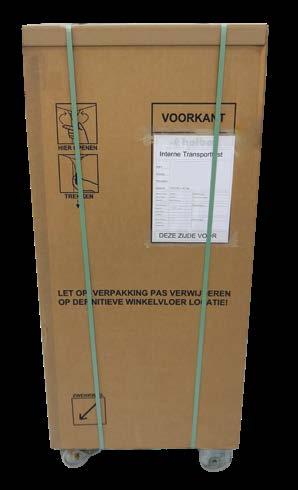
2 minute read
Quality and environmental respect
Frank van den Munckhof, who has been responsible for quality at Holbox for more than a decade, agrees. “With our sustainability efforts we are proactively working on the future. Quality control has a lot more to do with sustainability than you might think at first.”
Testing
Displays are not blindly put into production. They are subjected to extensive testing first. “Imagine that in the supermarket it turns out that a display is not strong enough after all, or that the adhesive doesn’t hold well. In a worst-case scenario, everything has to be retrieved, repaired or produced again. That costs raw materials and equipment”, Frank explains. That’s why we test our displays extensively, including a weight and transport test. A weight test involves the display being completely filled with heavy weights for a number of days. The display is then subjected to a transport test, because we want to make sure that a filled display reaches its destination in a proper condition. This means the display is filled and put on transport, after which it spends a full day in one of our trucks. Upon return, we check the display and, if necessary, we further optimise it, so that it can withstand transport without damage.
Guaranteeing quality
As regards any findings or mistakes we encounter during testing, we’re looking for a solution that is fed back to the various departments, including the studio. They convert these into design rules, which are applied by the designer when designing a display. That way the same mistake cannot be made twice.
“If we
didn’t do that and just started
producing, we would find out that something is wrong halfway through production. In that case too everything has to be redone and we’ll be throwing away material. This way we guarantee the quality of our displays and prevent wastage of resources, materials and the need for extra transport, while contributing to sustainability at the same time.”
Testing of raw materials
All important raw materials for the display, such as corrugated cardboard, the paper that is used on it, the glue, inks and varnishes are all extensively tested first. The same applies to grass paper. “First it must be clear whether this material can also be used in production. Can it be printed? Can it be laminated? How do the creasing lines fold? Can it be glued? These and more questions must be answered first. It’s looking for the right balance. Durability is a good thing, but it must be properly tested first.
Holbox is on the case
In the field of innovation, Frank is now working on, among other things, optimising the method of palletising and making it more predictable, in order to avoid unnecessary transport movements.
He is also working on replacing plastic packaging materials, which are used for packaging small parts that are part of a display, with a recyclable material.
“The change in sustainability is really something of the last five years. Holbox is on the case. The company is working hard on it and really is a trendsetter in the field of sustainability.” n









